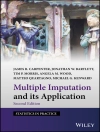In Canada, acceptance sampling has been used in legal metrology applications for nearly four decades. One of its principal uses has been in the quality control of utility meters that measure electricity or natural gas supplied to consumers. By law, such meters must be inspected for conformance to specification requirements prior to use and be periodically inspected while huse. With few exceptions, due to the numerous utility companies in the country and their varied practices, the meters exist in the form of isolated lots for inspection purposes. The proportion of nonconforming meters in a lot has traditionally defined lot quality for utility meter sampling inspection purposes. Another principal application of acceptance sampling has been in the quality control of the net contents of packaged products sold in the marketplace. Such products include those sold on the basis of such measures as weight, volume, length, and area. In this particular application, products are also usually inspected on an isolated-lot basis for regulatory purposes. However, lot quality is usually measured on the basis of two criteria for such products: the proportion of nonc- forming packages in the lot and the lot mean quantity. This section reviews Canadian quality control practices in these two areas of application, highlighting some of the deficiencies and issues. Three-class s- pling plans are proposed as a possible solution to some of these deficiencies and issues.
Innehållsförteckning
General Aspects of SQC Methodology.- How Some ISO Standards Complicate Quality Improvement.- On-line Control.- Optimal Two-Stage Sequential Sampling Plans by Attributes.- Three-Class Sampling Plans: A Review with Applications.- CUSUM Control Schemes for Multivariate Time Series.- The Art of Evaluating Monitoring Schemes — How to Measure the Performance of Control Charts?.- Misleading Signals in Joint Schemes for ? and ?.- The Fréchet Control Charts.- Reconsidering Control Charts in Japan.- Control Charts for the Number of Children Injured in Traffic Accidents.- A New Perspective on the Fundamental Concept of Rational Subgroups.- Economic Advantages of CUSUM Control Charts for Variables.- Choice of Control Interval for Controlling Assembly Processes.- Generalization of the Run Rules for the Shewhart Control Charts.- Robust On-Line Turning Point Detection. The Influence of Turning Point Characteristics.- Specification Setting for Drugs in the Pharmaceutical Industry.- Monitoring a Sequencing Batch Reactor for the Treatment of Wastewater by a Combination of Multivariate Statistical Process Control and a Classification Technique.- Off-line Control.- Data Mining and Statistical Control – A Review and Some Links.- Optimal Process Calibration under Nonsymmetric Loss Function.- The Probability of the Occurrence of Negative Estimates in the Variance Components Estimation by Nested Precision Experiments.- Statistical Methods Applied to a Semiconductor Manufacturing Process.- An Overview of Composite Designs Run as Split-Plots.












